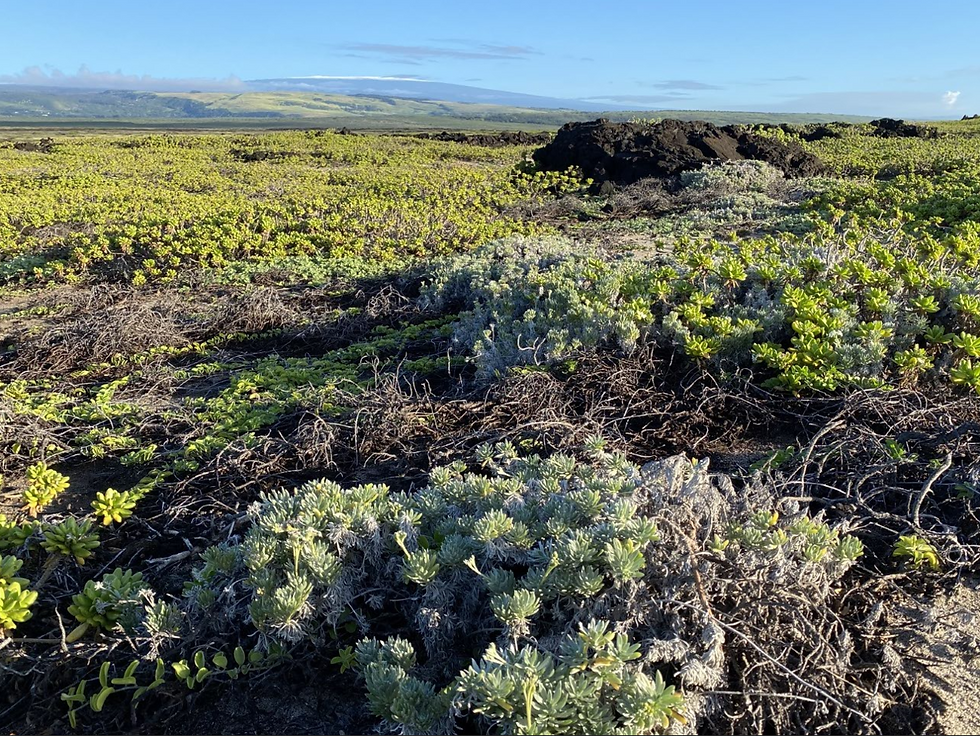
Coastal Strand Restoration
The Coastal discussion focused on the desire to design a monitoring scheme to track state changes based on indicators for coastal ecosystems, especially with long-term sea-level shifts in mind, though constrained by short-term monitoring capacity. The group agreed that key partners must be identified and those partners include agencies, scientists/specialists, and community members with local knowledge and identified three categories that could be tapped into: monitoring/tracking, field surveys, and place-based local knowledge of place. They outlined key steps for engaging in all three of these, as well as for establishing a core hui (team) to contribute to and facilitate the monitoring scheme itself.
Monitoring and Field Surveys
Monitoring would focus on tides, coastal monitoring, and weather data, some of which already exists within a sharing framework (e.g., tide models and coastline projections). As such, this type of information is easily accessible, although it may need to be modified to specific modeling boundaries. Weather stations are valuable for tracking climate variables but occasionally require complex coordination due to funding and staffing limitations.
The group's common experience was that current field surveys do not exist for their restoration sites, though some historical documentation may be useful. However, historical photos and documents may be useful resources. While current ecosystem descriptions and field surveys are easily accessible(with ample staff, funding, etc.), compiling historical documentation may require more complex coordination and planning.
Key partners for monitoring and field surveys include community members, lineal descendants, pertinent agencies, data specialists, archaeologists, drone operators (if necessary), and scientists. Local schools can also be included as a means to engage with the children of the community. The outcomes include creating maps of current and future vegetation maps which includes climate data,, a transition plan describing how to accomplish restoration goals with climate change in mind, identifying culturally sensitive areas that need non-biological protections or restoration techniques, and an action plan detailing the contextualized process. These plans would be informed by the community from the start and would result in short and long-term continually-funded monitoring plans that are available to the public.
Place-based Knowledge
Local knowledge of place names is a crucial component to place-based stewardship. Place names are not only documented in old maps and other historical documents but are also referenced in oli (chants), mele (songs), and moʻolelo (stories). Challenges include language barriers and the flaws of "parachute” or “colonial" science. Kūpuna (elders) hold much of this knowledge, and interviewing them is a means to capture some of the unwritten knowledge of an area. Because trust between researcher and community is essential for incorporating the lifeways and culture of the community into this process so as to facilitate this knowledge exchange respectfully, these interviews take complex coordination. Key partners here include kūpuna, community members, researchers fluent in ʻōlelo Hawaiʻi (Hawaiian language), local schools and organizations, and both indigenous and external scientists. Outcomes of this step include deepening relationships with place and understanding the landscape on multiple levels.
Core Hui (team)
Establishing a core hui or team was articulated as a critical step to bring together “the who’s who” of a place to not only assist with the creation of the monitoring plan, but to recruit consistent volunteers and maintain thoughtful and strategic communication to conduct the monitoring. This was identified as easily accessible. Key partners include the primary landowner/stakeholder of the land, neighboring landowners, community organizations working in the area, volunteers, schools and students, skilled moderators and facilitators for meetings and dissemination of information, and a designated and reliable point of contact.